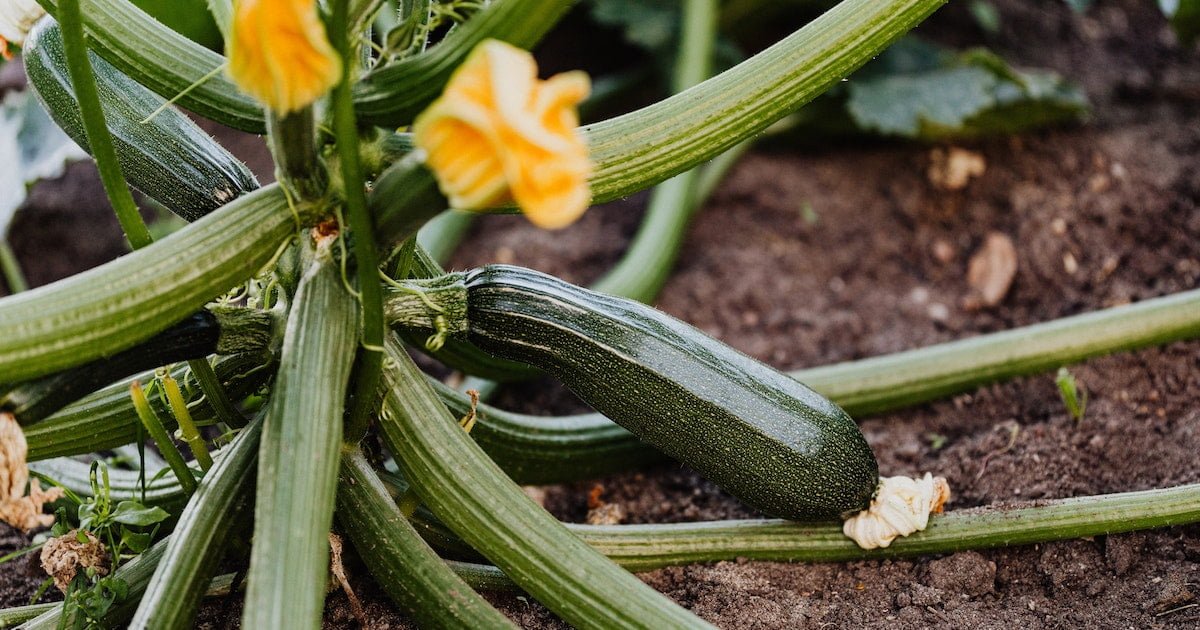Are you wondering how to calculate the yield of your zucchini plants and determine how much zucchini you can expect to harvest per plant? Look no further! In this article, we will guide you through the process of calculating the yield of your zucchini plants, empowering you to estimate the bountiful harvest that awaits you in your garden. By following our simple steps, you will gain valuable insights into the potential output of each plant, enabling you to plan and make the most of your zucchini cultivation. Let’s get started!
Factors Affecting Zucchini Yield
Climate and Weather Conditions
The climate and weather conditions play a significant role in determining the yield of zucchini plants. Zucchinis thrive in warm weather, with temperatures around 70-85°F (21-29°C) being optimal for their growth. If the temperatures are too high or too low, it can negatively impact their yield. Additionally, zucchinis require plenty of sunlight, preferably six to eight hours a day. Adequate rainfall or regular watering is essential for their growth and development.
Soil Quality and Fertility
The quality and fertility of the soil directly influence the yield of zucchini plants. Zucchinis prefer well-draining soil that is rich in organic matter. The soil should have a pH level between 6 and 7, which is slightly acidic to neutral. Prior to planting, it is recommended to amend the soil by adding compost or well-rotted manure to enhance its fertility. Nutrient deficiencies can lead to stunted growth and reduced fruit production in zucchini plants, so it is crucial to ensure that the soil is adequately nourished.
Planting Techniques
Proper planting techniques contribute to the overall yield of zucchini plants. It is essential to sow the zucchini seeds directly in the garden or transplant seedlings when the soil temperature reaches around 60-70°F (15-21°C). The seeds should be planted at a depth of 1-2 inches (2.5-5 cm) and spaced according to the recommended guidelines (discussed further in the section on determining plant spacing). Additionally, providing adequate water and applying a layer of mulch around the plants can help retain moisture and regulate soil temperature, thereby promoting healthier and more productive zucchini plants.
Variety Selection
The choice of zucchini variety can significantly impact the yield. There are various zucchini varieties available, each with its own traits and characteristics. When selecting a variety, consider factors such as disease resistance, fruit size, and growth habit. Different varieties may have varying levels of productivity, so it is important to choose one that is suitable for your specific growing conditions and desired yield.
Maintenance and Care
Proper maintenance and care are essential for maximizing zucchini yield. Regular watering, especially during dry periods, is crucial to prevent water stress and promote healthy growth. Zucchini plants require consistent moisture, but it is important to avoid overwatering, as it can lead to root rot and other diseases. Weeding should also be done regularly to minimize competition for nutrients and resources. Additionally, providing support to the plants, such as using stakes or trellises, can help prevent overcrowding and improve air circulation, reducing the risk of fungal diseases.
Pest and Disease Management
Effective pest and disease management practices are crucial for achieving a high zucchini yield. Common pests that can affect zucchini plants include aphids, squash bugs, and cucumber beetles. Regular inspection of plants and prompt action against pests is vital to prevent infestations. In terms of diseases, powdery mildew is a common problem for zucchinis. To prevent or control these issues, consider using organic pest control methods, such as introducing beneficial insects or using organic insecticides, and practicing good sanitation, such as removing infected plant material. Crop rotation and planting disease-resistant varieties can also help minimize the impact of pests and diseases.
Pollination
Proper pollination is essential for the development of zucchini fruits. Zucchini plants have both male and female flowers, and pollination occurs when bees or other pollinators transfer pollen from the male flowers to the female flowers. Insufficient pollination can result in poor fruit set and reduced yield. To attract pollinators, consider planting flowers that attract bees, providing a water source, and avoiding the use of pesticides that can harm beneficial insects. Hand-pollination can also be done by manually transferring pollen from the male flowers to the female flowers using a small brush or cotton swab.
Harvesting Practices
Harvesting zucchinis at the appropriate stage is crucial for maintaining a continuous yield. Zucchinis should be harvested when they are still tender and relatively small, usually when they reach a length of 6-8 inches (15-20 cm). Overripe zucchinis can become tough and less flavorful, affecting the overall yield. Regularly check the plants for mature fruits and harvest them promptly to encourage the production of new fruits. Using sharp gardening tools and handling the zucchinis gently during harvesting can help minimize damage to the plants.
Timing and Duration of Growing Season
The timing and duration of the growing season can impact the overall zucchini yield. Zucchinis are warm-season vegetables and require a growing season of approximately 60-70 days from planting to harvest. It is important to start planting zucchinis after the danger of frost has passed and the soil has warmed up sufficiently. By considering the length of the growing season and choosing early maturing or quick-maturing zucchini varieties, you can ensure a sufficient harvest before the onset of unfavorable weather conditions.
Previous Crop Rotation
Rotating crops is an important practice to maintain the soil health and reduce the risk of disease and pest buildup. Avoid planting zucchinis in the same location where other cucurbit crops, such as squash or melons, were grown in the previous year. By rotating the crops, you help break the life cycle of pests and diseases that specifically target zucchinis, promoting healthier plants and higher yield.
Calculating Zucchini Yield
Determining Plant Spacing
Proper plant spacing is essential to allow each zucchini plant to receive adequate sunlight, water, and nutrients for optimal growth and yield. The spacing requirements may vary depending on the variety, so it is important to follow specific guidelines.
Estimating Number of Plants
Once the required spacing is determined, you can estimate the number of zucchini plants that can be accommodated within the available growing space. This estimation is crucial for planning and ensuring sufficient yield based on the available resources.
Estimating Fruit Production
To estimate the fruit production of zucchini plants, factors such as the average yield per plant, environmental conditions, and variety selection need to be considered. These factors can influence the number and size of zucchinis produced by each plant.
Considering Harvest Period
Determining the length of the harvest period and assessing the frequency of harvest are important aspects of calculating zucchini yield. By understanding the duration and frequency of harvest, you can plan accordingly and estimate the total zucchini yield.
Summing Up Zucchini Yield
To calculate the overall zucchini yield, you need to record and weigh the harvested zucchinis. By summing up the weights of all the harvested zucchinis, you can determine the total yield and assess the success of your zucchini cultivation efforts.
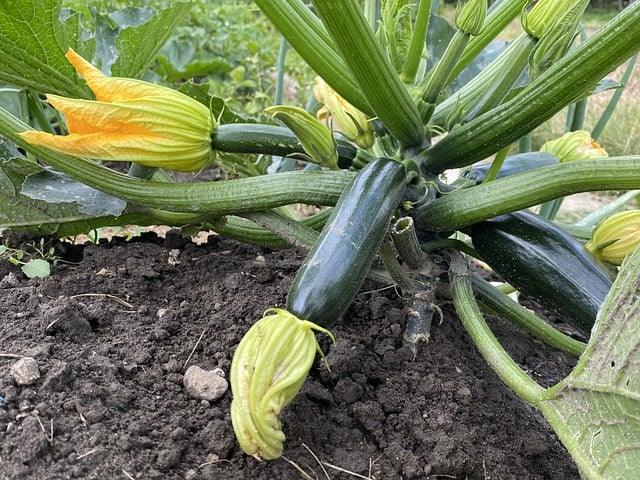
Determining Plant Spacing
Recommended Spacing for Zucchini
When it comes to determining plant spacing for zucchinis, it is recommended to leave approximately 24-36 inches (61-91 cm) between each plant. This spacing allows sufficient airflow and sunlight penetration, reducing the risk of fungal diseases and allowing the plants to fully develop without overcrowding.
Adjusting Spacing for Container Gardening
If you are growing zucchinis in containers, it is necessary to adjust the plant spacing accordingly. A minimum container size of 5 gallons is recommended for each zucchini plant. To accommodate multiple zucchini plants in a container, maintain a spacing of at least 36 inches (91 cm) between each plant.
Factors to Consider when Determining Spacing
When determining the spacing for zucchini plants, consider factors such as the size and growth habit of the variety, the gardening space available, and the desired yield. Some zucchini varieties are more compact or bushy, while others may have a trailing or vining growth habit. Adjust the spacing accordingly to ensure adequate room for growth and optimal yield.
Estimating Number of Plants
Available Growing Space
To estimate the number of zucchini plants that can be accommodated in your garden or growing space, measure the area where you plan to plant them. Calculate the total available space in square feet or square meters.
Spacing Requirements
Based on the recommended plant spacing (discussed earlier), determine the spacing requirements for your zucchini plants. Divide the total available space by the required spacing to get an estimate of the maximum number of plants that can be grown.
Recommended Plant Density
While it is helpful to maximize the number of zucchini plants for a higher yield, it is important to maintain an appropriate plant density to avoid overcrowding. Overcrowding can lead to increased competition for resources and increased risk of diseases. It is generally recommended to leave enough space between the plants for proper airflow and healthy growth while still maximizing yield.
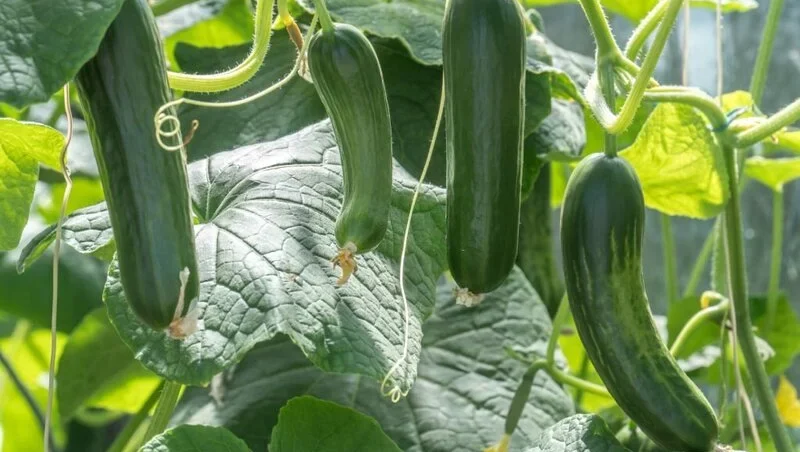
Estimating Fruit Production
Average Yield per Zucchini Plant
The average yield per zucchini plant can vary depending on various factors, including the variety, growing conditions, and care practices. On average, a healthy and well-maintained zucchini plant can produce anywhere from 6 to 10 zucchinis during its harvest period.
Impact of Environmental Conditions
Environmental conditions such as temperature, sunlight exposure, and water availability can influence the fruit production of zucchini plants. Optimal conditions that provide consistent warmth, sufficient sunlight, and proper watering can contribute to higher fruit production.
Impact of Variety Selection
The choice of zucchini variety can also impact the fruit production. Some varieties are known for their heavy fruiting ability, while others may have a more moderate yield. Consider selecting varieties that are known for their high productivity if maximizing yield is your goal.
Considering Harvest Period
Determining the Length of the Harvest Period
The length of the harvest period for zucchini plants can vary depending on the variety and growing conditions. On average, zucchini plants typically produce fruits for a period of 4 to 6 weeks. It is important to monitor the plants closely and note when the fruits start to develop to determine the length of the harvest period.
Assessing Frequency of Harvest
During the harvest period, zucchini plants can produce new fruits every few days. It is important to assess the frequency of harvest by consistently checking the plants for mature fruits and harvesting them on time. Regular harvests not only ensure optimal fruit quality but also encourage continuous fruit production.
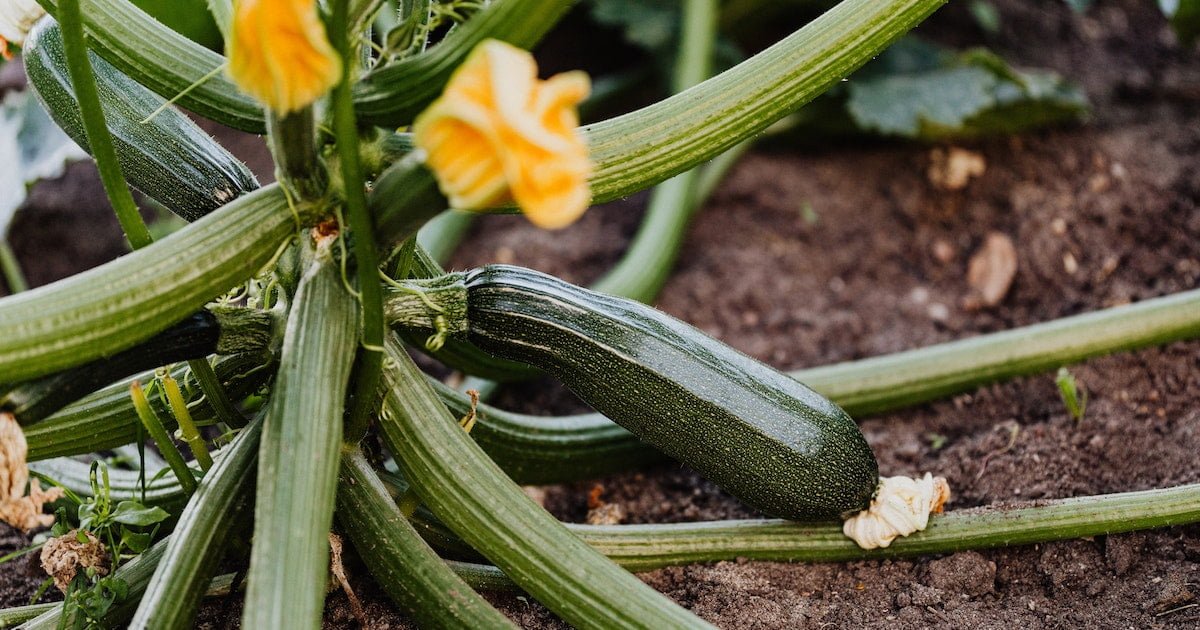
Summing Up Zucchini Yield
Recording and Weighing Harvested Zucchinis
To calculate your zucchini yield, it is essential to keep a record of the number of zucchinis harvested. This can be done by keeping a tally or using a journal to track the daily or weekly harvest.
Calculating Total Weight
After recording the number of harvested zucchinis, you can weigh each fruit individually using a kitchen scale or any other weighing device. Make sure to record the weight of each fruit accurately.
Converting Weight to Yield
To determine the total zucchini yield, sum up the weights of all the harvested zucchinis. This will give you the total weight of your zucchini harvest. You can then convert the weight to yield based on your preferred unit of measurement, such as pounds, kilograms, or ounces per plant.
Common Challenges and Tips
Overcoming Low Yield Issues
If you are experiencing low zucchini yield, there are several steps you can take to overcome this challenge. Ensure that the plants are receiving sufficient sunlight, water, and nutrients. Address any pest or disease issues promptly. Consider hand-pollination if there is inadequate natural pollination. It is also important to review your planting techniques and ensure that you are following proper care practices.
Improving Zucchini Plant Productivity
To improve the productivity of zucchini plants, focus on providing optimal growing conditions. Maintain consistent moisture levels in the soil. Apply organic fertilizers or compost to enhance the soil fertility. Regularly inspect the plants for pests and diseases and take appropriate action. Adequate spacing, proper plant support, and regular harvesting can also promote higher productivity.
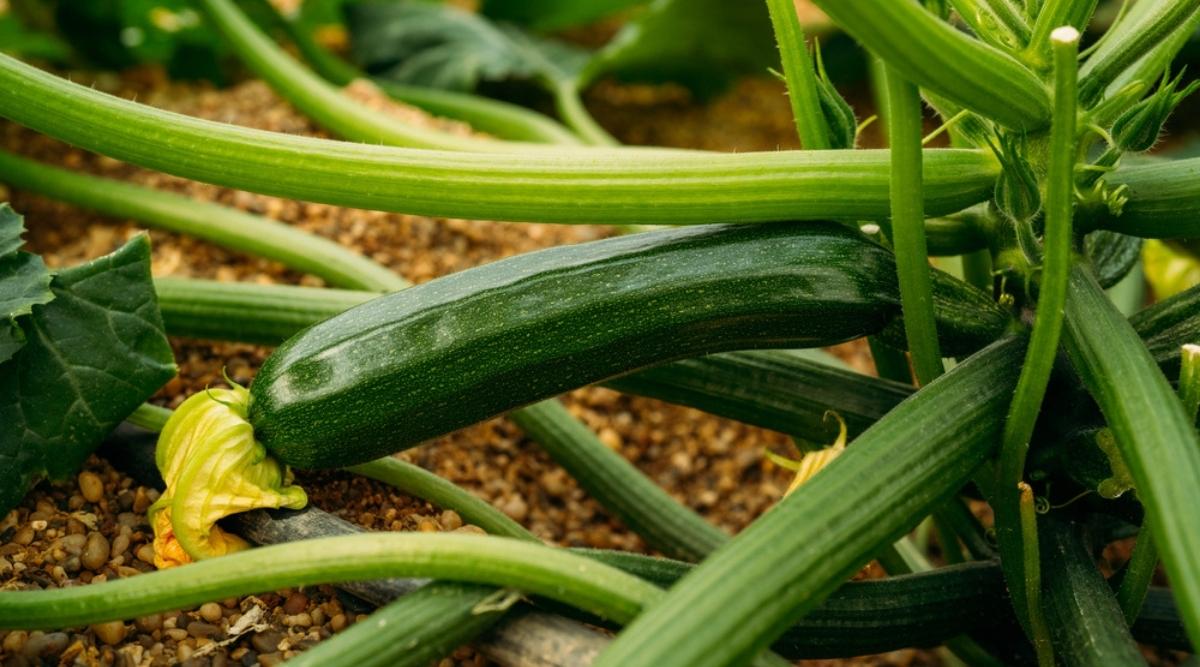
Conclusion
Calculating the yield of zucchini plants involves considering various factors that can impact their growth and fruit production. By understanding the factors affecting yield, determining plant spacing, estimating fruit production, considering the harvest period, and summing up the zucchini yield, you can effectively plan and optimize your zucchini cultivation efforts. Additionally, being aware of common challenges and implementing appropriate care practices can help ensure a successful and bountiful zucchini harvest. Happy gardening and enjoy your zucchinis!
